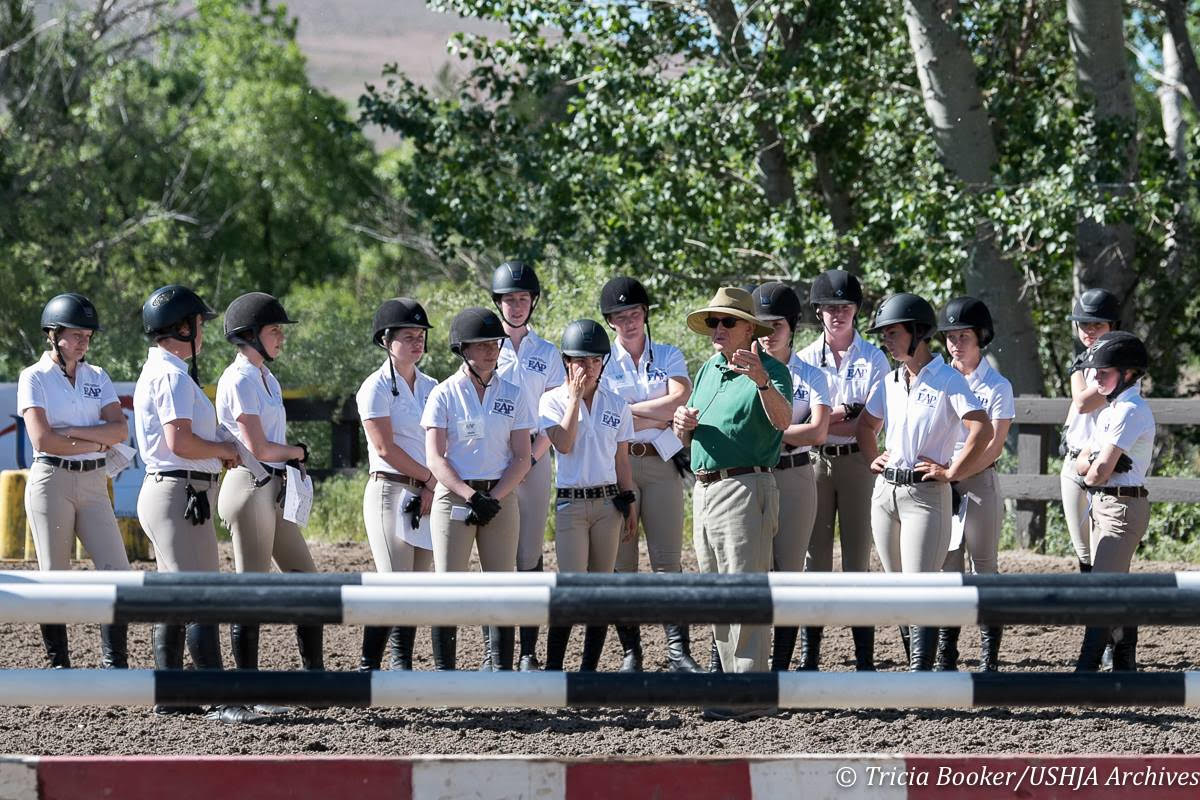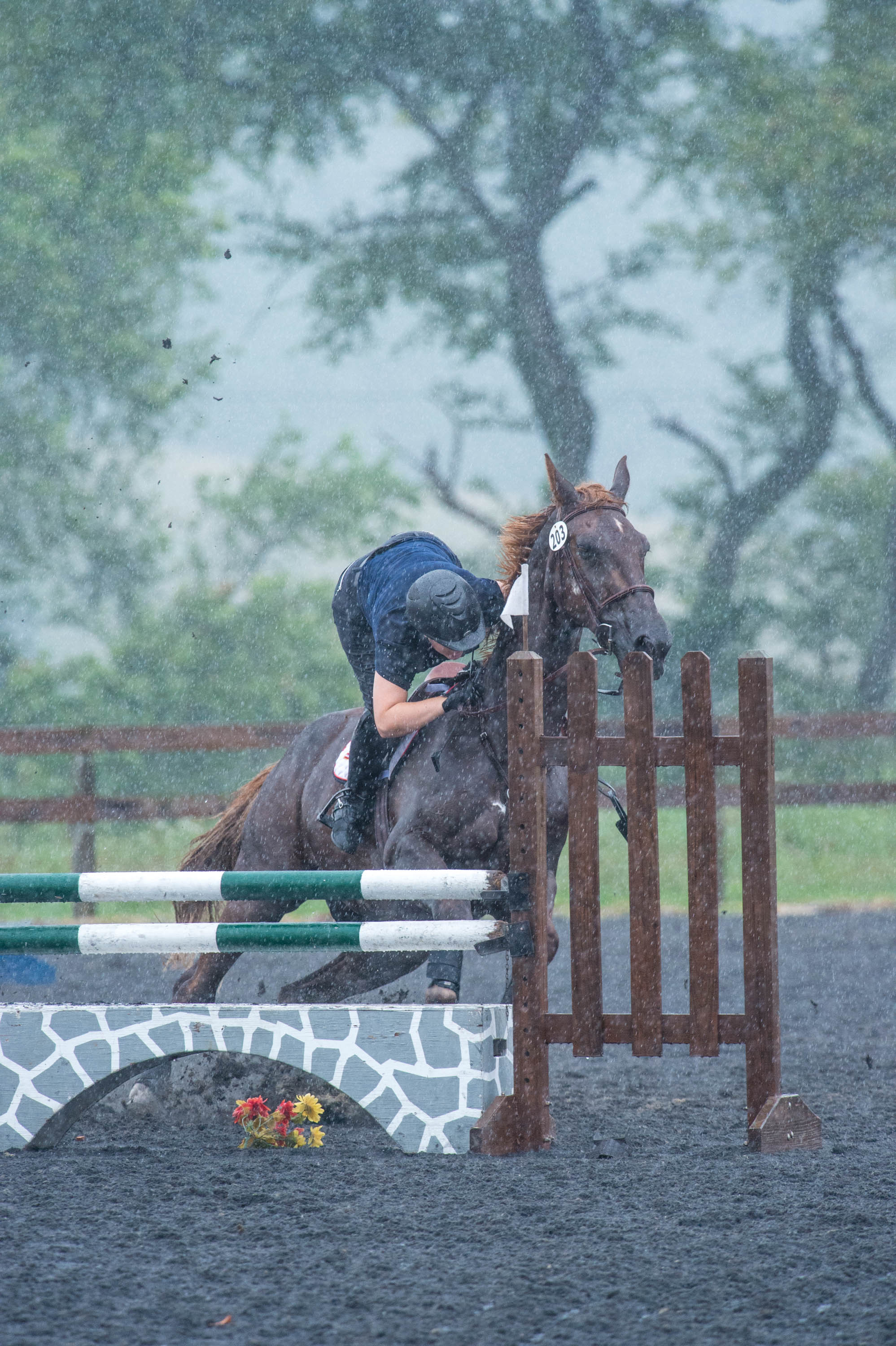
Lessons and clinics are part of my life. I enjoy them because the routine is familiar and comfortable.
However, it is always a great departure from the usual to do what I did recently—conduct a clinic in a different location from my typical sessions, using a new format, with riders from a discipline other than eventing. This change-up can provide a wonderful learning experience for both the participants and the clinician; it certainly was for me.
Let me get the “alphabet” and the nuts-and-bolts background out of the way first. This spring the United States Hunter Jumper Association asked me to do a Regional Training Session in Reno, Nevada, for its Emerging Athlete Program. Riders 25 and younger may apply to the program, which is partially sponsored. They must provide their own horses and are expected to display proficiency over show-jumping courses set from 1.10 meters, including a liverpool. These athletes may not have competed in any competition over 1.35 meters.
Ten of these five-day sessions have been held across the country this year. They are quite intensive and are unusual for several reasons: They are by invitation only, they are hosted at superior facilities, they are taught by elite clinicians (there are several Olympic medalists on this year’s list of clinicians) and, perhaps most importantly, they include daily instruction in stable management from world-class stable managers. In addition, participants get daily lectures and presentations on topics ranging from riding theory to veterinary discussions of equine nutrition as well as a host of other topics, all designed to educate athletes who are thinking of making horses a career.
The riders in my Reno clinic had specialized in the hunter/jumper disciplines almost exclusively, and it showed in their riding. They had good “eyes for distance,” meaning they knew what was going to happen in front of an obstacle before it happened. For the most part they were on suitable horses and had obviously been well coached. Their horses were able to maintain a rhythmical stride between obstacles, the riders looked through their turns for the next obstacle and they could remember complicated courses and patterns. Most important, they all had a wonderful lower-leg position.
However, they were almost unfailingly ignorant of the history of their sport. They lacked any knowledge of famous riders who came before them, who had made many of the same mistakes the participants were making, who had learned from those mistakes and who are in the Show Jumping Hall of Fame.
More practically, once it came to “flatwork,” some obvious flaws showed up in both their technique and in their education. Most of the participants could not describe to me the correct aids for the simplest of all lateral movements—a turn on the forehand—and few of them could name the various lateral movements that we use to supple and engage our horses. In addition, they all had “picture-perfect” positions for the dressage sessions. By this, I mean that they looked terrific—at the halt. Once I asked horses and riders to move off at the walk or trot, it immediately became apparent that the athletes’ backs were not truly connected to their horses’ backs. They didn’t exactly bounce at the trot, but they had not yet learned to follow the motion of their horses’ backs with their waists and hips. I focus on this connection during all my dressage lessons, regardless of the level or location of the lessons; the more intimate this connection, the better our horses go.
Fortunately, these riders had been selected as willing and able to learn, and many of them showed marked improvement in a short time. Like most riders today, they have been taught to compete—and now they must learn how to ride. All in all, this clinic was a great experience for me, as an opportunity to be exposed to that many young athletes who have already started to commit to horses as a lifelong career.
Approximately 200 riders will take part in these clinics, and 16 are chosen for the EAP National Training Session, held in November. In the past, two riders from the national session have been selected to attend the George H. Morris Horsemastership Training Session in Wellington, Florida, in January of the following year. You can find out more about this terrific learning experience at www.ushja.org/EAP.

You Can Learn from Others’ Experience
My job these days is to stand between a horse and a rider and explain one to the other. I have learned to “translate” to a horse what his rider really meant with that aid and to explain to the rider what her horse meant with that response. This translation is not a skill that one is born with; you need to learn it.
Throughout my life, what we learn and when we learn it have always interested me. Early in the summer I attended a commencement address by Thomas Bliss, the CEO of Genisphere, a biotechnology company. He was talking about how people learn and said something that really resonated with me. He said, “Experience takes too long.”
I am proud of my experience in the horse world and remember fondly the mistakes I made and the difficult changes I was able to make in order to improve. I use that experience every time I teach, to improve things I see going wrong. However, I often make the point to my students that they don’t have to make the same mistakes I made in order to learn the same things and come to the same conclusions about that particular mistake. Famed American comedian Will Rogers also talked about learning. He noted that men learn in three different ways: Some can learn about it in a book, most can learn by watching, but some just have to urinate on the electric fence to see if it is on.
Coaches usually have a long list of pet phrases that summarize their teachings in pithy, memorable ways. When it comes to experience, my list of expressions is as long as your arm:
“Good judgment comes from experience, experience comes from
bad judgment.”
“You got what you needed, not what you wanted, and that’s the best
kind of experience.”
And then there’s my personal favorite: “Even white rats learn from experience.”
But now Thomas Bliss has added a new aphorism to my list—“Experience takes too long.”
Learning to ride takes a long time; it takes a really long time if you do not take advantage of the mistakes of others. Making a mistake in your calculus homework can be spotted and easily corrected. However, making a mistake in your conditioning homework when preparing for your first big competition can have disastrous effects on your horse. Sure, you won’t do it the same way next time, but if your mistake was serious enough, there might not be a next time for your horse. Expert, skilled, experienced (there’s that word again) horsemen have been successfully preparing horses for that type of competition for years with minimal injuries to the horses in their care. It would have been a lot more fun and a lot safer for your horse if you had availed yourself of the experience of others.
I have seen several recent articles on the perpetual adolescence of this generation, many of whom are still living in their parents’ basements long after graduation from college. While every human being is unique, the experience we need to master a skill is not unique; it is knowledge that has been acquired by others and, in many cases, has been saved for posterity in books and videos. I mentioned previously that this generation seems to think it is living in a world in which no knowledge of history is needed. This brings to mind philosopher George Santayana’s famous quote, “When experience is not retained, as among savages, infancy is perpetual. Those who cannot remember the past are condemned to repeat it.” If you cannot learn from others and retain that knowledge, you are doomed to live forever as a child. If you do not learn from the past, you are unprepared for the future. As the late Pulitzer Prize-winning columnist Charles Krauthammer once remarked, if you remain ignorant, you are unable to choose wisely. Wisdom is the anticipation of consequence, and our horses deserve our wisest and best decisions. It is the least we can do for them.
This article was originally published in the October 2018 issue of Practical Horseman.










